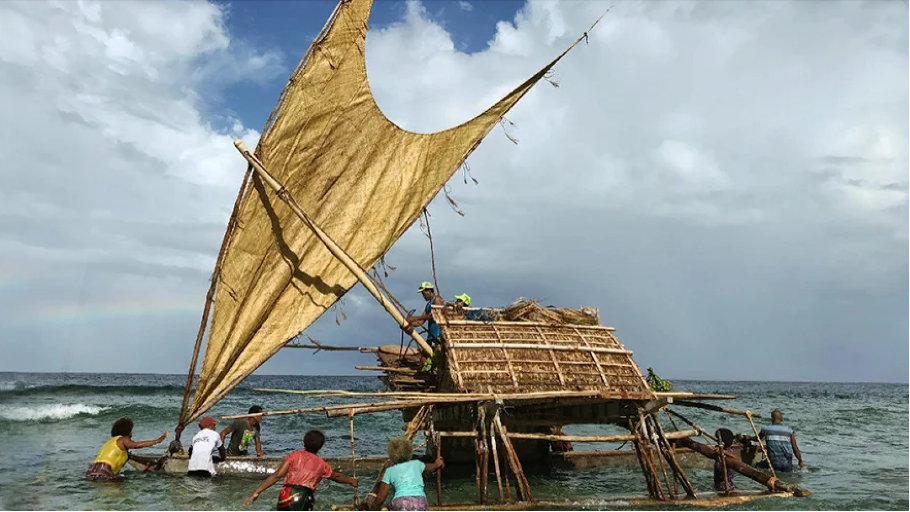Combining Archaeological Survey and Oral Tradition in the Vanuatu Archipelago
- Kara Johnson

- Nov 20, 2023
- 3 min read
Take a walk through an event landscape with archaeologist James L. Flexner and Vanuatu's local knowledge holders

The Vanuatu island archipelago lies west of Fiji in the crudely named Pacific island region of Melanesia. While hosting stunning island scenery and enchanting underwater landscapes, the islands are also home to a complex history of colonialism, beginning with the arrival of Captain Cook in 1774. Characteristic of the time period between British arrival and Vanuatu’s independence in 1980 was the settlement of Presbyterian missionaries on islands such as Tanna and Erromango and their subsequent interaction with local Indigenous groups. In 2014, Dr. James L. Flexner of the University of Sydney published his community-engaged archaeological study of this interaction as both a locally and archaeologically interesting phenomenon.
The mission settlements in Vanuatu were initially sparked by the deaths of John Williams and James Harris in 1839. The two were performing an initial assessment to determine mission viability, when they were killed and their bodies divided to be ritually eaten by locals. Indigenous oral histories tell us the nuanced story: that residents were incredibly weary of white travelers due to prior violence having been committed against the children of chiefs. Williams and Harris were asked to remain on the beach upon their arrival, but pushed inland nevertheless, interrupting a significant feast. This was an unacceptable act, and it cost the men their lives. Meanwhile in the West, sensationalized stories of cannibal islanders ran rampant, and the deaths of Williams and Harris inspired fast action by Presbyterians (Flexner and Taki 2022).
Missionaries arrived again in 1840, and over the years engagement with local communities led to substantial Christian conversion as well as an “indigenization” of this new religion (Flexner 2014). In turn, Christianity is now a large part of local Ni-Vanuatu (a term that encompasses the many Indigenous cultures of Vanuatu) identity. Subsequently, in the present day it seems that there is considerable local interest in the archaeology and preservation of the mission period.

Flexner’s community-based archaeology project explored these local interests through an archaeological survey incorporating the telling of oral histories. Guided by Indigenous knowledge keepers, he explored four major “event landscapes,” one of which followed the killing of John Williams. Event landscapes are made up of “memory places,” recognized as both human-altered features or seemingly unmodified but culturally significant natural features (Flexner 2014). Imagine memory places as the sets designed for the stage–or event landscape–on which history is performed. The story of John Williams was traced from the beachside location of his arrival, past a stalk of bamboo marking a point of no return, to the site of his killing, and continues with the movement of his body, eventually concluding at a much later memorial dedicated to him and other perceived martyrs (Flexner 2014).
By engaging with local Indigenous communities, Flexner acquired a much richer understanding of Vanuatu mission context than classic archaeological survey techniques could ever provide on their own. The importance of allowing space for multivocality in archaeology is something that Flexner stresses throughout his report. This type of archaeological practice is hugely beneficial as a means to gain a deeper grasp on the mechanisms of colonialism and its impacts on contemporary relations. More importantly, however, it shows a basic level of respect and deference to a community regarding their own heritage.
I urge those working in Melanesia, elsewhere in the Pacific, Southeast Asia, or any of the numerous other areas wrought by European colonialism to follow Flexner’s lead and engage with the interests of local and Indigenous communities.
Suggested Readings:
References
Flexner, James L., & Taki, J. (2022). Fear of a cannibal island: Colonial fear, everyday life, and event landscapes in the Erromango missions of Vanuatu. Journal of Social Archaeology, 22(1), 104–127. https://doi.org/10.1177/14696053211036269
Flexner, James L. 2014. “Mapping Local Perspectives in the Historical Archaeology of Vanuatu Mission Landscapes.” Asian Perspectives 53 (1). https://search-ebscohost-com.offcampus.lib.washington.edu/login.aspx?direct=true&db=ant&AN=671301&site=ehost-live.
Knobloch, Rajko. “River Erromango Vanuatu.” Flickr. November 13, 2006. https://www.flickr.com/photos/92712950@N00/296555334/.
New Zealand Archives. “Dillons Bay, Presbyterian Church, Vanuatu.” Flickr. August 4, 2019. https://www.flickr.com/photos/archivesnz/48458207951.
“With Research, Communities Should Lead and Academics Follow.” Mirage News, July 1, 2021. https://www.miragenews.com/with-research-communities-should-lead-and-588436/.



Comments